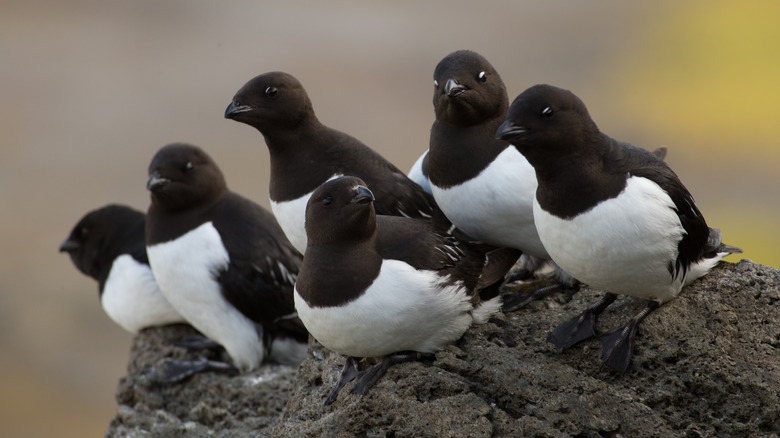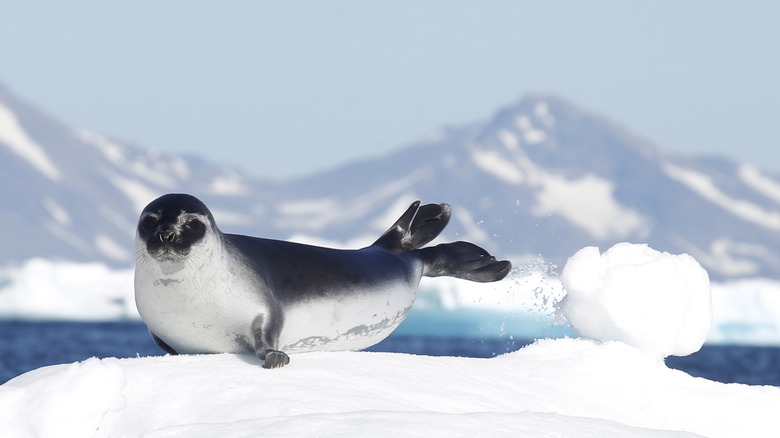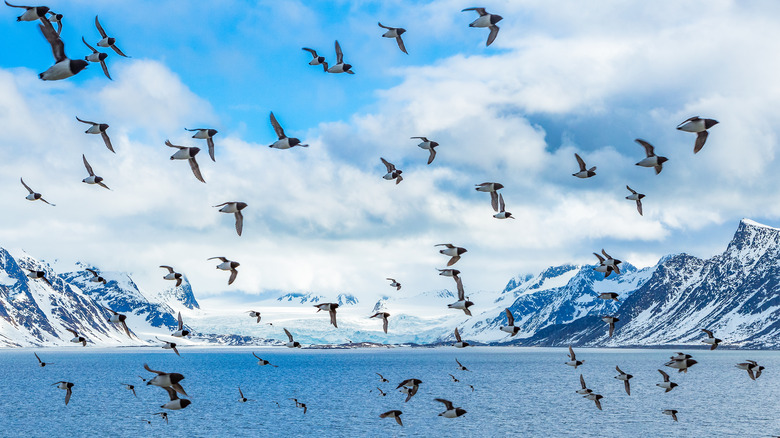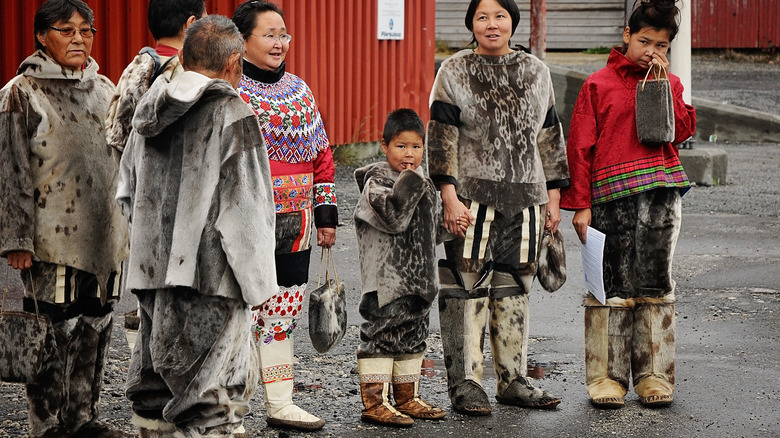Greenland's Kiviak Shows The Impressive Feats Of Fermentation
Fermentation, or the preservation of food or drink by means of yeast or bacteria, must have seemed like nothing short of a miracle in action to the first humans who discovered their edibles could have long-lasting power. In 7000-6600 B.C. the Neolithic Chinese combined fruit, honey, and rice to make an alcoholic drink. Winemaking was discovered shortly after in Georgia, and there is evidence that the Babylonians were also creating alcohol around the year 3000 B.C. Bread, beer, and wine were all results of fermentation, but it wasn't until the mid-19th century that it was discovered exactly what was responsible for the phenomenon: yeast. Up until then, what mattered was simply that a method existed for keeping food and drink safe for consumption, particularly in times when fresh food was scarce.
To the Inughuit people (an Indigenous Inuit culture) who reside in northern Greenland, food preservation has historically been vital, especially in the extensive, frigid winters that are routine in the Arctic Circle. Along with a steady diet of marine animals, fish, birds, eggs, and small land mammals, kiviak — also called kiviaq — has been a traditional part of the group's diet for generations. To much of the world, kiviak may be an unconventional source of food, but in reality, it is a genius discovery of food preservation that showcases the Inughuit's master knowledge of fermentation. In addition, kiviak exemplifies a cultural staple that is about much more than food.
What is kiviak?
Arctic cultures have traditionally relied on fishing and hunting to procure the majority of their food. Because the winters are so long in places like northern Greenland and the window of abundant food acquisition is so short, people such as the Inughuit had to find the means of preserving their hauls to extend through harsh seasons. Kaviak is one such preservation discovery. It is made by packing hundreds of whole dovekie birds — which flock to northwest Greenland every spring — into a seal carcass. The prepared seal is then buried underneath rocks where it undergoes a natural process of fermentation for anywhere from three months to more than six months. When it is unearthed, the birds are fully preserved and eaten.
According to Atlas Obscura, the Inughuit are not naïve to the fact that this culinary feat is ridiculed outside of Greenland and take offense to such pretenses. As a group that has preserved its own food for several millennia, the Indigenous people are keen on safe methods of meat fermentation. Criticism is also an affront to their ancestors' resourcefulness in survival methods, not to mention a slight to their (and other cultures') personal tastes. The process of making kiviak involves the entire Inughuit community as well. Men and women of all ages, plus their children, have a role in catching the dovekies or preserving the seal, which builds communal spirit and upholds time-honored traditions.
The process of making kiviak
The Inughuit use large nets to gather the dovekies needed for kaviak. Depending on the size of the birds and the size of the hollowed-out seal, anywhere from 300 to 500 animals are placed inside the carcass. The birds are not plucked, skinned, or processed at all; even the beaks remain intact. Once they are tightly packed into the seal, the preparer releases as much air as possible from the crevice. The seal skin is stitched together, sealed with fat, and buried for about three to six months depending on factors like the size of the kaviak and weather. The tradition has been practiced for so long that people can tell the fermentation process is done based on how the kaviak smells.
The Inughuit people are privy to the fact that this type of preservation carries risk when it's done incorrectly, which is why the utmost care is put into their tried and true methods. The seal itself does not get eaten — it's only the doveties that are consumed once the aging process has finished. Atlas Obscura notes that British chef Mike Keen, who is a fan of kiviak, describes the creation as pungent — like blue cheese with flavor notes of cured meat. It is undoubtedly an acquired taste that newbies could initially be awed by (either negatively or positively), but one that has been sustaining the lives of humans — and pleasing their palates — for thousands of years.
A wintertime treat
An Inughuit by the name of Hivshu — who is from the town of Siorapaluk, which sits in northwest Greenland — claims there are no other Inuit cultures that regularly practice kiviak making, which makes the dish exceptionally regional, per Atlas Obscura. The Inughuit people continue to enjoy kiviak in the wintertime during any major event, such as a holiday or a birthday, making the dish somewhat of a delicacy. The fermentation of the doveties results in meat that is very tender and can be eaten without further cooking. Before consuming, the feathers are removed, and the meat is washed.
Remote as northwestern Greenland is, it is not completely devoid of modern technology. In fact, kiviak as a means of winter survival is really no longer an issue, as food items are shipped in regularly. The dish, however, continues to be prepared as a means of upholding tradition and sustaining cultural pride. Like the rest of the world, the small community of Inughuhit considers it vital to pass on ancestral practices to future generations — and hopefully, educate others about the beauty of diversity and unfamiliar food cultures.



